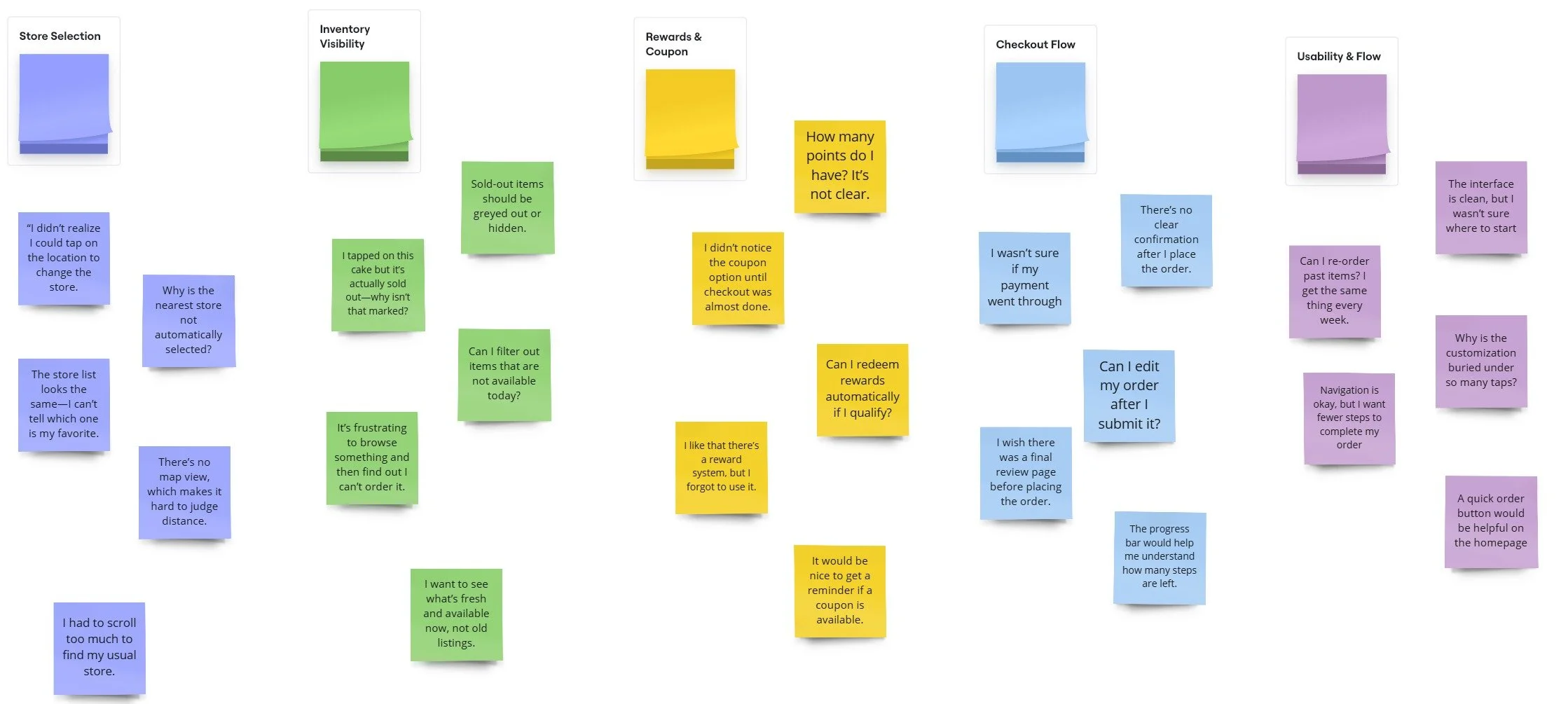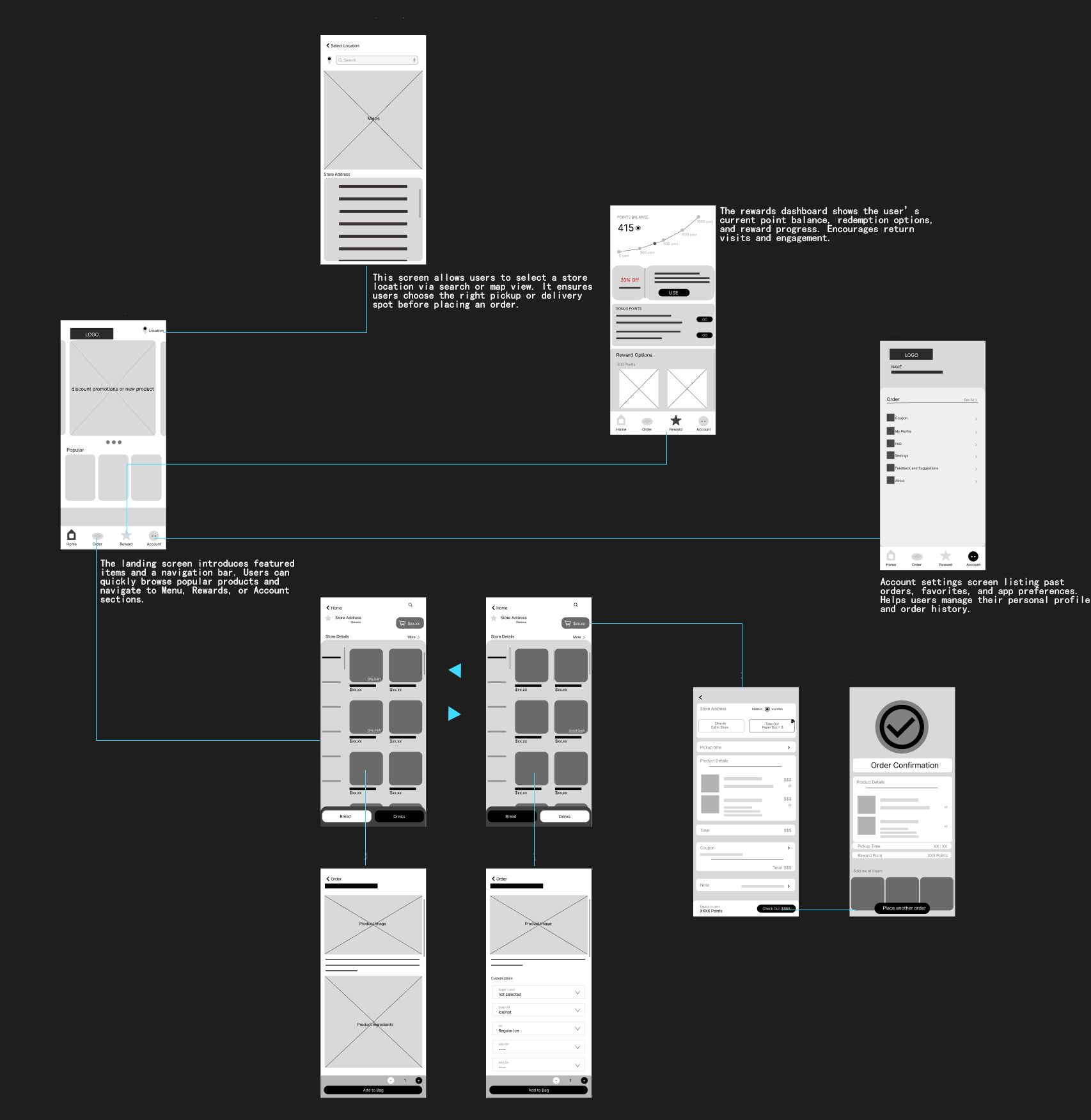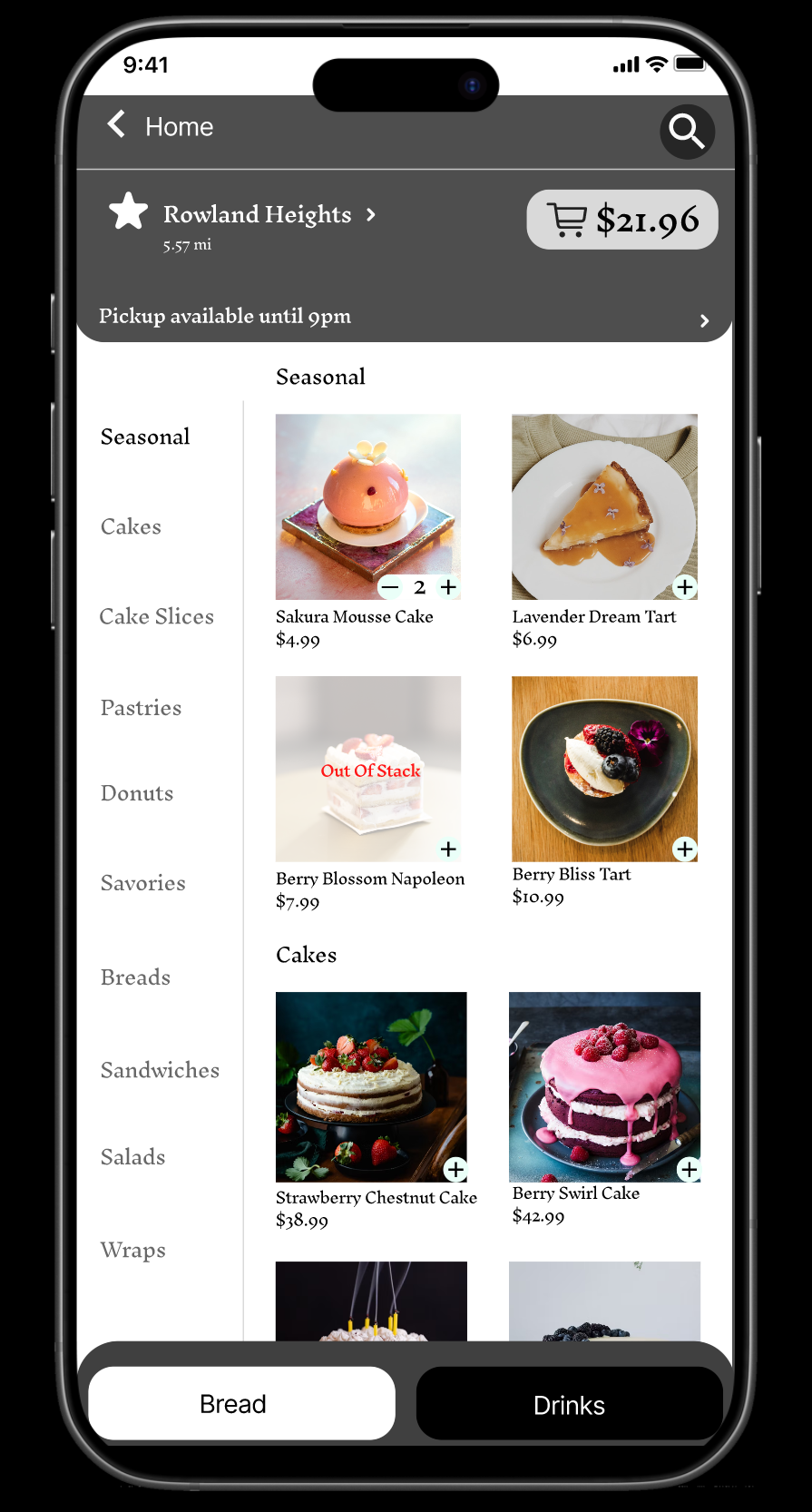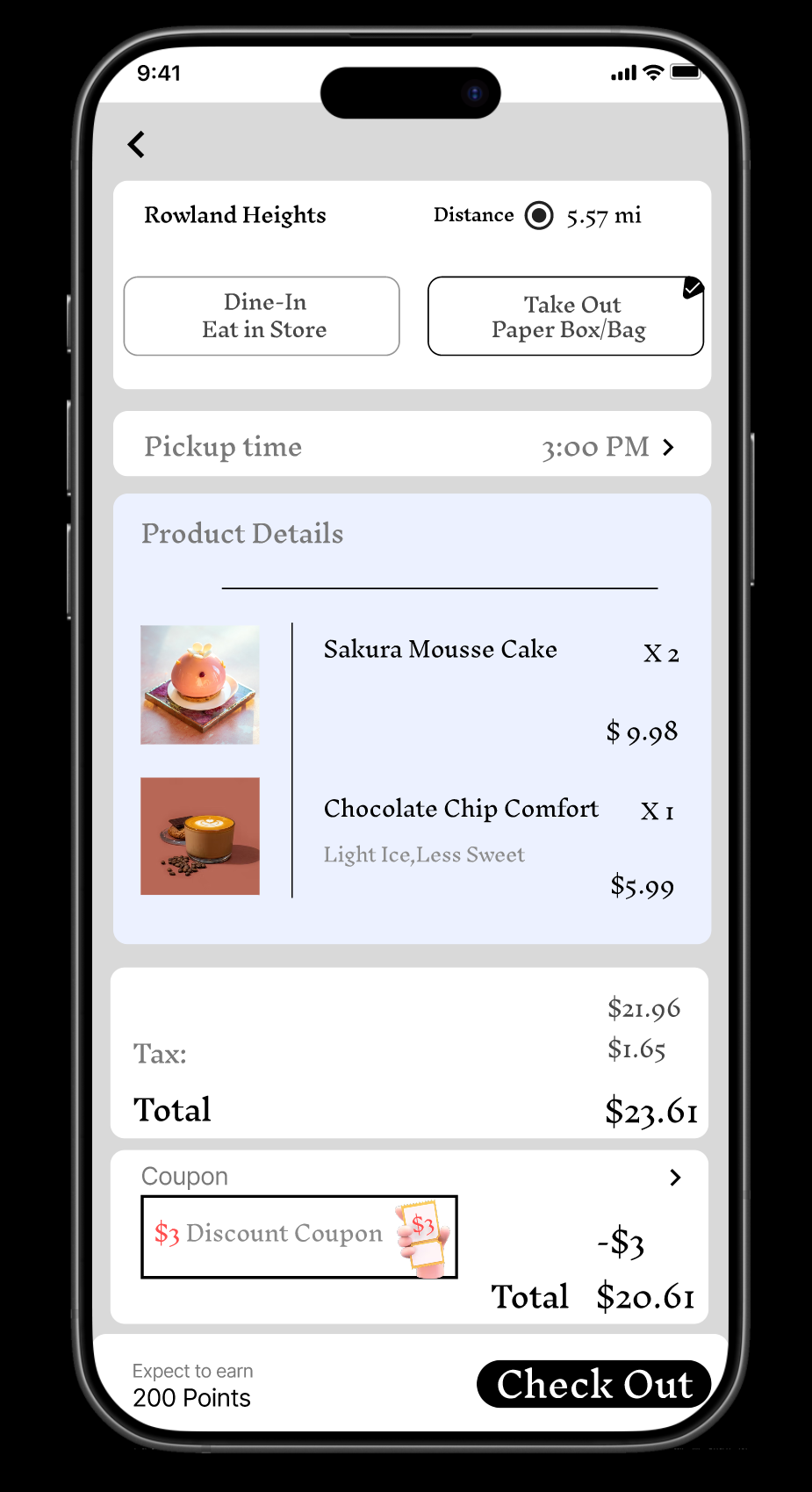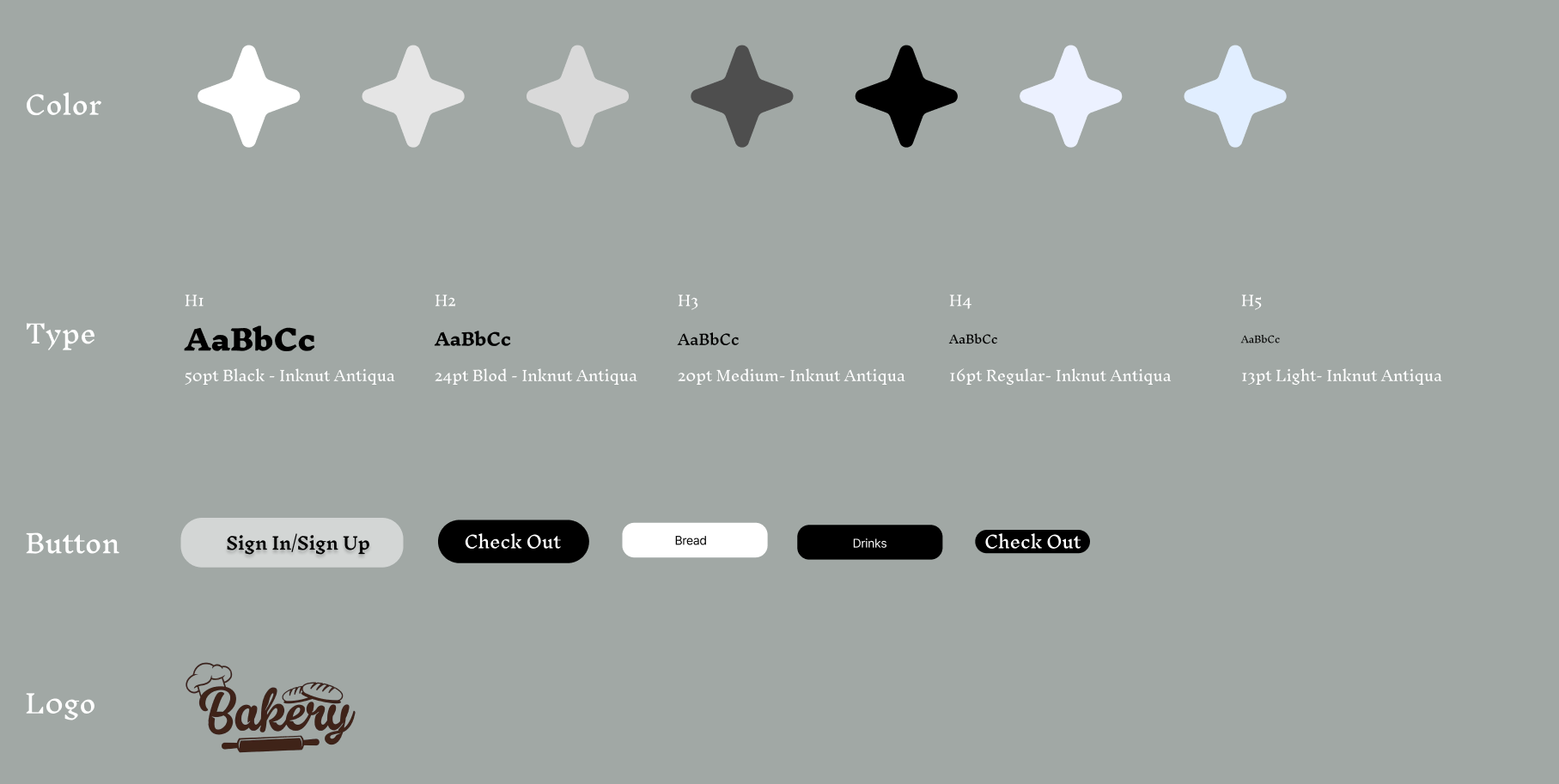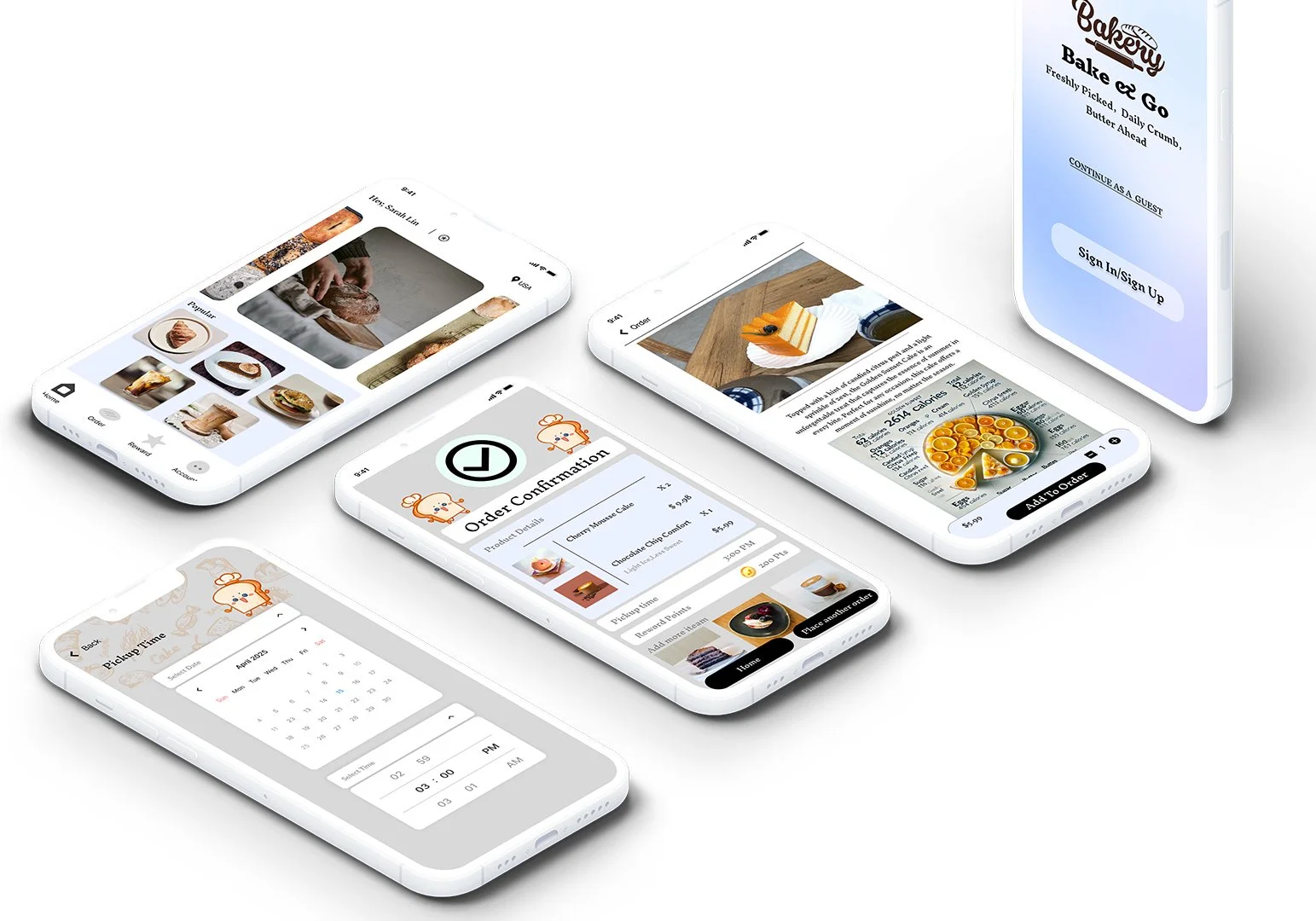Bake & Go – Bakery Ordering App
Project Title: Bake & Go – Bakery Ordering App
Role: UX Designer (Research, Design, Testing, and Presentation)
Duration: 6 weeks
Freshly Picked,Daily Crumb,Butter Ahead
Project Vision
This project aims to design a mobile ordering app that makes the bakery experience faster, easier, and more convenient for customers. By allowing users to place orders in advance through their phones, the app helps reduce wait times and simplify the ordering process—especially during busy hours. One of the key goals is to provide real-time inventory updates, so that sold-out items are clearly marked. This feature prevents users from wasting time searching for unavailable products once they arrive at the store, improving both satisfaction and efficiency. Ultimately, this app empowers customers to order with confidence and helps bakeries better serve their customers with clarity and care.
Challenges
Balancing simplicity and feature depth
Making sold-out items visible without overwhelming the interface
Ensuring users noticed optional features (like coupons and pickup times)

Kickoff
This project began as part of the Google UX Design Certificate program, with the goal of creating a mobile app that improves the bakery ordering experience. The initial challenge was to help busy customers order more efficiently and avoid long in-store wait times.
I began by identifying common frustrations with traditional bakery visits—such as not knowing what’s available, long lines, and lack of ordering flexibility. These early insights shaped the scope of the project: to design a solution that allows users to browse, customize, and place orders ahead of time using a mobile device.
What challenges do users face when ordering from bakeries?
Who are we designing this product for?
How might we help them save time and avoid frustration?
What features do users expect from a mobile ordering experience?
How can we make the flow clear and accessible for all users?

I gathered feedback from usability testing sessions with five users as part of our bakery ordering app project. Then i created an affinity diagram to sort the observations into meaningful themes that reflect users' needs and frustrations.
These themes were further categorized based on common goals users expressed, such as efficiency, clarity, engagement, and confidence. For example, users wanted a faster way to select stores, clearer visibility of sold-out items, better access to rewards, and more certainty during checkout.
This process helped surface the most pressing pain points and allowed us to prioritize design improvements that would both enhance the user experience and support the app’s business goals, such as increasing order completion rates and customer loyalty.
Emily Chen – The Commuter Professional
Age: 28
Occupation: Marketing Specialist at a tech startup
Emily loves starting her day with a buttery croissant and a latte from her favorite bakery. But between packed trains and early meetings, she often doesn’t have time to wait in line. With the app, Emily can place her order during her commute and pick it up right when she arrives—no stress, no sold-out surprises.
Meet the Users
James Morales – The Family Buyer
Age: 34
Occupation: Software Engineer & father of two
James enjoys weekend mornings with his kids, picking up pastries and planning birthday surprises. He used to get frustrated when his go-to cakes were unavailable. Now, the app lets him check inventory, schedule pickups, and even re-order his favorites—all with a few taps.
Ana Torres – The Student Saver
Age: 22
Occupation: College student, part-time barista
Ana is always on the lookout for good deals and loves apps that offer points or discounts. She was thrilled when she realized the bakery app keeps track of her points and reminds her when she can redeem a free treat. For Ana, it’s not just ordering—it’s rewarding.
Competitive Analysis
I examined four major competitors in the food and beverage ordering space: Panera Bread, Dunkin’, Tous Les Jours, and Starbucks. While these apps don’t focus exclusively on bakery orders, they shape user expectations around mobile ordering, customization, and pickup convenience.
Each competitor offered a distinct experience, but there were recurring gaps and contrasts that revealed opportunities for my own design. My bakery app aims to combine the best features of these platforms while addressing pain points specific to bakery shoppers—like inventory visibility and reward clarity.
The most noticeable patterns in the competitive landscape included:
– Pre-order Convenience vs. Real-Time Availability Issues
– Rich Branding vs. Cluttered or Dated Layouts
– Loyalty Features Present vs. Poor Reward Visibility
– Fast Checkout vs. Lack of Order Confirmation Clarity
– Customization Depth vs. Overwhelming Complexity
These insights helped shape the foundation of my design decisions and identified the key moments where my app could stand out—by streamlining the experience while maintaining flexibility and clarity for time-sensitive customers.
Preparing the Journey
Before jumping into high-fidelity design, I created a user journey flow to visualize how users interact with the bakery ordering app from start to finish. This helped clarify the user’s goals at each stage and ensured that my design decisions were grounded in the real-world steps users take to complete an order.
The flow maps out a typical journey starting from store selection, to menu browsing, to customizing and placing an order, and finally receiving pickup confirmation. Additional paths include account registration, login, viewing rewards, and reordering favorites.
By outlining both primary and secondary navigation paths, I was able to spot friction points and opportunities for streamlining the experience—especially in areas like store switching, sold-out item handling, and reward point visibility.


Wireflow
Once I had a few paper wireframes sketched out, I started connecting the screens to map out how users would move through the app. This helped me spot any awkward steps or missing elements in the journey. I tweaked the flow to make sure it felt smooth and intuitive—especially around customizing orders and checking out—before jumping into the digital wireframes.
Iteration
After testing the initial wireflow and gathering early feedback, I identified a few areas where the user experience felt flat, inefficient, or lacked clarity. Using these insights, I moved forward with a high-fidelity iteration that improved the app’s usability, visual appeal, and overall flow.
Lacked Bakery Vibe
Problem: The original wireframes were clean but too generic—nothing felt specific to a bakery experience.
Solution: I introduced soft color gradients, friendly serif typography, and real product imagery to create a cozy, artisanal feel.
Checkout Felt Disconnected
Problem: The checkout flow felt like three separate steps—cart, time, payment—breaking the user's momentum.
Solution: I consolidated these steps into a more unified, scrollable screen, making the whole checkout process smoother and faster.
Location Flow Was Too Basic
Problem: Users had trouble identifying which store they were ordering from, especially without visuals or labels.
Solution: I enhanced the layout with clear store names, better spacing, and a selection highlight to improve clarity and reduce mis-taps.
Rewards Were Easy to Miss
Problem: Users didn’t know they were earning points, and had no visual cues to find or use them.
Solution: I added a visible reward tab, used icons and progress bars, and showed rewards again during checkout and confirmation.
>
>
>

CHALLENGE 1
Dealing with Sold-Out Frustration
A major challenge identified during user testing was the frustration caused by ordering items that were already sold out. Several users mentioned that they placed an order only to arrive at the bakery and learn that the item wasn’t available—causing confusion, disappointment, and wasted time.
To resolve this, we explored ways to integrate real-time inventory updates into the UI. Our goal was to make it immediately clear when an item was out of stock or only available in limited quantity. In later design iterations, sold-out items were visually greyed out or labeled directly on the menu screen, reducing guesswork and increasing user trust.
CHALLENGE 3
Hidden Rewards and Coupons
Although users appreciated having a reward system, they often missed it entirely during checkout. They didn’t know how many points they had or whether they had a usable coupon until it was too late.
To solve this, I surfaced reward information earlier in the user journey, added a “Rewards” section to the tab bar, and made coupons visible on the checkout page. Users are now prompted when they’re eligible for discounts—encouraging engagement and boosting satisfaction.
CHALLENGE 2
Confusion in Store Selection
During early testing, users reported that finding and selecting their preferred bakery location was not intuitive. Many were unsure whether the app auto-selected the nearest store, and some couldn't distinguish their usual store from others in the list.
To address this, I redesigned the store selection flow to include a map view, distance indicators, and a “favorite store” tag. I also added a search function and clearer UI hierarchy, helping users quickly recognize and confirm the store they wanted to order from.
CHALLENGE 4
Unclear Checkout Confirmation
Several users expressed uncertainty after placing their order—they weren’t sure if the payment went through or when to pick up their items. The lack of visual feedback and status tracking weakened their trust in the process.
I addressed this by designing a clear post-checkout confirmation screen, including estimated pickup time, store location, and order details. I also added a “View My Orders” button on the home screen, giving users a sense of control and reassurance.
Style Guide
For the bakery ordering app, I focused on creating a style that feels warm, artisanal, and inviting, reflecting the handmade quality of the bakery’s products.
The color palette uses soft neutrals and warm browns, evoking feelings of comfort, authenticity, and freshness—just like walking into a local bakery. Darker tones provide strong contrast for important buttons like "Check Out," ensuring accessibility and clarity.
The typeface, Inknut Antiqua, was chosen for its classic, handcrafted look, enhancing the cozy and welcoming brand identity. Different font weights help create a clear visual hierarchy across the app, from large friendly headers to easy-to-read supporting text.
The button styles maintain simplicity and strong visibility to guide users through the ordering process with minimal friction. The logo incorporates a rolling pin and chef's hat, reinforcing the bakery’s personal touch and artisanal spirit.
Together, these design elements create a cohesive, delightful experience that matches both the product’s feel and the needs of busy, mobile-first customers.

Takeaways
Working on the bakery ordering app was a deeply rewarding experience. I wanted to create a solution that made it easier and faster for customers to place orders while highlighting real-time inventory updates—a common frustration I personally noticed in small bakery visits.
This project marked my first time combining user research insights with goal-directed design thinking. It taught me the importance of balancing business needs and user needs, especially in service-oriented apps. I learned that even small elements like store selection clarity and visible reward points can dramatically impact user satisfaction and loyalty.
Going forward, I will continue applying user-centered approaches in my design work, always remembering that good design not only solves problems but also builds emotional trust with the users.





